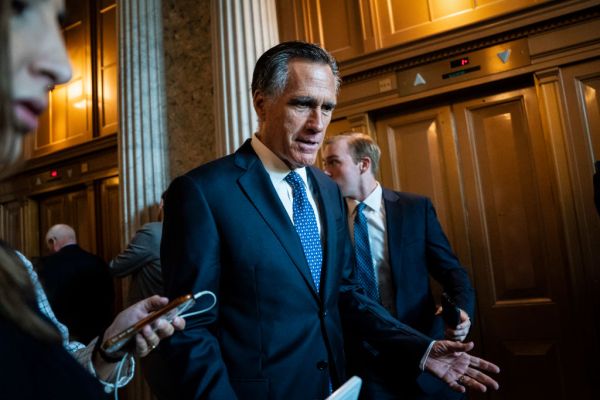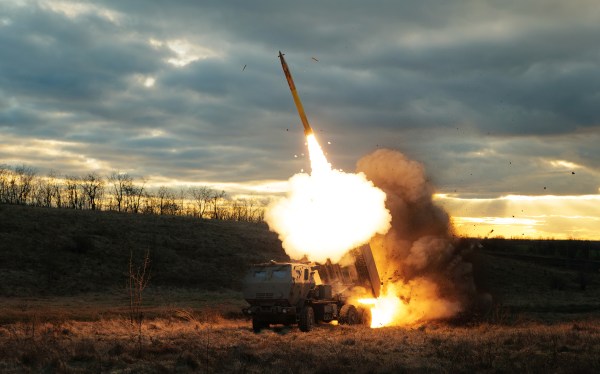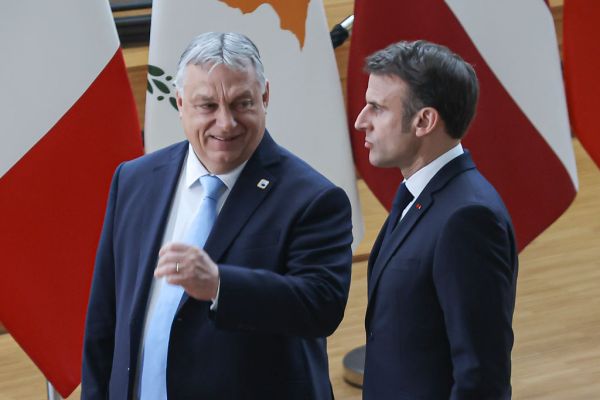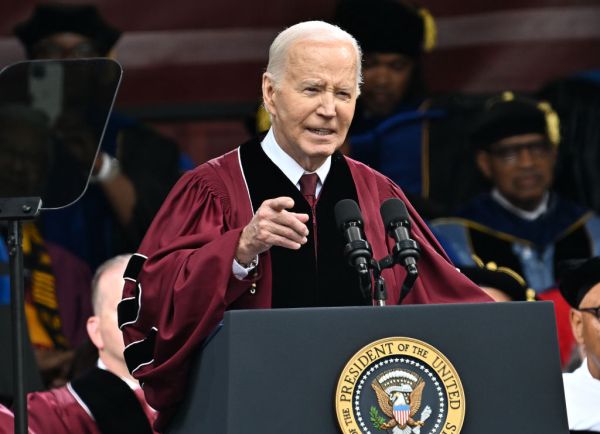Happy Thursday! One story dominated the news out of Green Bay, Wisconsin all week: Bears popping up in trees across town, again and again and again.
While the Wisconsin Department of Natural Resources didn’t offer an official explanation for the sudden ursine explosion, it seems possible, with the NFL season approaching, the bears headed north from Chicago to avoid further humiliation. Last Saturday, the rebuilding Green Bay Packers hosted nearly 65,222 fans at Lambeau Field not for a game, but for Packers Family night, essentially an extended practice. The following day, the Packers’ onetime rival, the Chicago Bears, only managed a crowd of 15,106 fans at Bears Family Fest. The resulting photo comparison was—er, with apologies—embarrassing.
Quick Hits: Today’s Top Stories
- President Joe Biden issued an executive order on Wednesday placing new limits on American investments in China’s technology industry, including investments in advanced semiconductors, quantum computers, and artificial intelligence relevant to military applications. The order—which cites the International Emergency Economic Powers Act—will also require U.S. companies working with China to notify the Treasury Department about investments in AI and less advanced semiconductors. The details will be ironed out as the Treasury Department solicits public input for its final rulemaking under the order, and the rules will go into effect next year.
- Russian Defense Minister Sergei Shoigu announced yesterday that Russia intends to shore up its military presence along the country’s borders with NATO members, claiming the action is necessary due to NATO’s moves to admit Finland and Sweden, as well as the buildup of military forces in border states like Poland.
- The U.S. and Saudi Arabia have agreed on a path to normalizing relations between Israel and the Middle Eastern country, the Wall Street Journal reported yesterday. The deal, which the U.S. hopes to finalize in the next nine to 12 months, reportedly offers concessions to the Palestinians in exchange for Saudi Arabia recognizing Israel. U.S. National Security Adviser Jake Sullivan met with Saudi Crown Prince Mohammed bin Salman two weeks ago in an effort to move the negotiations along.
- The White House announced yesterday it had launched a two-year competition to identify and patch software vulnerabilities using artificial intelligence. The AI Cyber Challenge—overseen by the Defense Advanced Research Projects Agency (DARPA) in collaboration with four top AI companies—will task participants with using the emerging technology to secure “vital software” with AI.
- The U.S. Treasury imposed additional sanctions on Belarus yesterday over the contested 2020 election of the country’s president Alexander Lukashenko. The new sanctions target Belarus’ main airline, state-owned aviation and steel companies, and the country’s Department of Financial Monitoring—a government body the U.S. says is involved in suppressing civil liberties and the free press. Eight individuals associated with those entities and efforts to help Lukashenko evade sanctions are also targeted.
- Special counsel Jack Smith obtained a search warrant earlier this year for former President Donald Trump’s Twitter account, according to court documents released yesterday. Twitter was fined $350,000 for its delayed compliance with the search warrant. Trump’s tweets were cited multiple times in Smith’s indictment of Trump, which charged the former president with illegal actions related to his efforts to overturn the 2020 election.
- FBI agents attempting to arrest a Utah man being investigated for allegedly threatening President Joe Biden’s life shot and killed the man during a confrontation Wednesday morning. The man, Craig Robertson, had allegedly made online posts threatening Biden—as well as Vice President Kamala Harris and New York District Attorney Alvin Bragg*—that coincided with Biden’s trip to Utah. “The FBI takes all shooting incidents involving our agents or task force members seriously,” the agency said in a statement. “In accordance with FBI policy, the shooting incident is under review by the FBI’s Inspection Division.”
- Democratic Sen. Dianne Feinstein of California—Congress’ oldest sitting member—briefly went to the hospital on Tuesday after a “minor fall in her home,” her office announced yesterday. Feinstein, 90, has faced pressure from Democrats to step down before her term expires in January 2025 amid signs of confusion and a monthslong hiatus earlier this year due to shingles.
- The second GOP presidential primary debate will be hosted by Fox Business, the Republican National Committee announced yesterday. Spanish-language network Univision and right-leaning video platform Rumble will be partners for the debate, which is set to take place next month at the Ronald Reagan Presidential Foundation and Institute in California. Frontrunner Donald Trump has not yet announced whether he will partake in the RNC’s first primary debate in Milwaukee on August 23, but said yesterday he will not sign the loyalty pledge that party officials have made a prerequisite for participation.
- Wildfires in Hawaii concentrated on the island of Maui have forced residents to flee, in some cases, into the Pacific Ocean. The fires—fanned by winds from Hurricane Dora—have killed at least six people and prompted the evacuation of more than 2,100 others.
The Counteroffensive Grinds On

As anticipation built in the spring ahead of Ukraine’s planned counteroffensive against invading Russian forces, some observers hoped it would usher in the end of the war. Leaders in Kyiv tried to temper expectations. “Most people are … waiting for something huge,” the Ukrainian Defense Minister Oleksii Reznikov said in May. He feared that would lead to “emotional disappointment.” He was not wrong.
The Ukrainian counteroffensive against Russia’s invasion, now entering its third month, has not yet produced any major breakthroughs against a heavily fortified Russian line. Though the effort is likely to continue for several more months and may still deliver some significant battlefield victories, Ukrainian officials are worried Western support could begin to wane—particularly in the U.S.—without a clear end to the conflict in sight.
The long-awaited and much-telegraphed counteroffensive followed some encouraging Ukrainian successes during the winter and early spring, where Ukraine significantly outperformed expectations. But as we wrote a few months ago, playing defense is, militarily, much easier than going on offense. And while Ukraine spent months preparing for the effort to take back occupied territory, so did the Russians, setting up heavily fortified defensive lines featuring deep and wide trenches and vast minefields along the roughly 600-mile front line. “The defensive fortifications that were designed by [Russian General Sergey] Surovikin which were built over the last nine months are really, really extensive,” Dmitri Alperovitch, founder and chairman of Silverado Policy Accelerator, tells TMD. He added the fortifications include “multiple lines of defense, reinforced trenches backed by artillery fire and rotor-based aviation, minefields, anti-tank traps and various ditches and the like, and Russians are also defending it very competently.”
Ukrainian fighters have notched a few victories in their pushes toward the Azov Sea and to retake the city of Bakhmut—which Wagner paramilitary forces captured in May after nine months of brutal fighting—winning back control of a handful of villages and several miles of territory across the length of the front line. But this map, from the Institute for the Study of War and the American Enterprise Institute’s Critical Threats Project, offers a bird’s-eye view of the whole front. It hasn’t changed much since the beginning of the offensive. (An interactive version of this map, updated daily, can be found here, and offers a closer look at some of the gains made around Kherson, in the south, and near Bakhmut, north of Donetsk.)
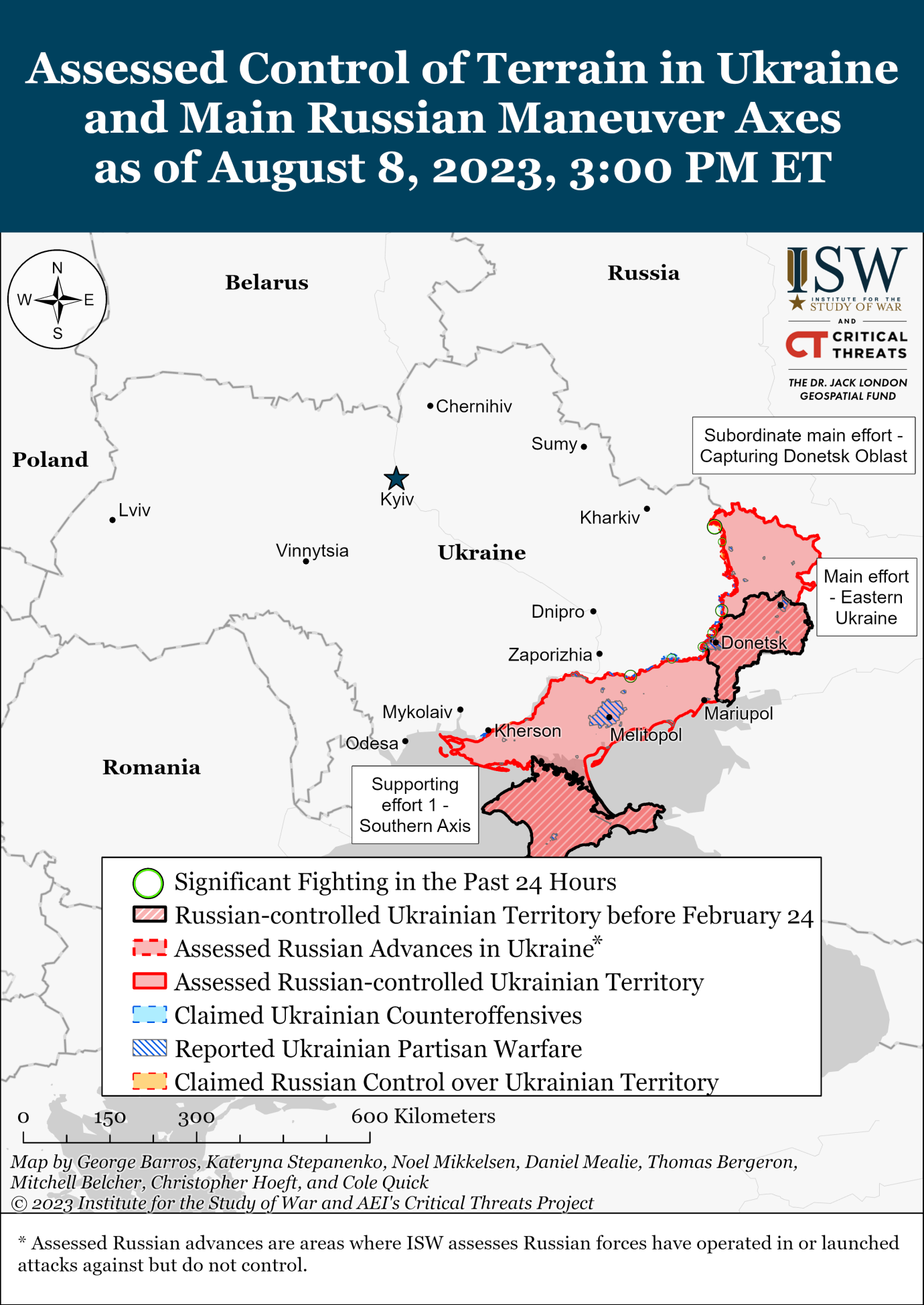
Ukrainian forces have reportedly sustained heavy casualties in both personnel and materiel trying to even reach the fortified Russian positions. Ukrainian infantry are moving through minefields on foot to preserve their limited supply of Western tanks and armored vehicles—a task made slightly easier by U.S.-supplied cluster munitions. The bombs, which break into smaller explosives and scatter across the target field, have helped an outmanned Ukrainian force advance. “Part of the way you deal with mass formations is with this scatterable munition,” retired Lt. Gen. Ben Hodges, a former Army commander in Europe, told the Wall Street Journal last week. “If you’re sitting in an open trench, you’re going to pay a huge price due to these things.”
Ukrainian President Volodymyr Zelensky has acknowledged, as he did to Latin American press earlier this week, the sluggish pace of progress.“The counteroffensive is complex,” he said. “It is perhaps unfolding slower than some might wish.” Western officials have started to get antsy too, with some expressing doubts to CNN that real progress could be made in the weeks that remain before the fall.
But it’s still possible all this pessimism is misplaced. “Moltke the Elder said, ‘No plan survives first contact with the enemy,’ and I think that’s what we’re seeing now,” says Gian Gentile, a retired U.S. Army colonel and associate director of the RAND Corporation’s Arroyo Center. “There is something to them taking their time to try to reduce Russian artillery and indirect fire systems and also electronic warfare systems to a certain point where they can then commit a big part of their counteroffensive force.”
Sure enough, multiple Western outlets reported last week Ukraine was deploying reserves of well-trained units backed by tanks and armored vehicles that had been waiting as the infantry probed for weak spots along the long front. They are reportedly fighting in the southeastern Zaporizhzhia region, at the Russian line south of the Ukrainian-held village of Orikhiv—which is 60 miles from the Azov Sea. Making progress there could mean cutting off Russian supply lines and better access to Crimea, putting Russia on the back foot.
The best hope for a major breakthrough may be around Bakhmut, which the Russians did not have much time to reinforce before Wagner withdrew and the counteroffensive began. But while victory there would be symbolically meaningful, it “is really a road to nowhere,” Alperovitch says. “It does not necessarily give Ukraine a strategic position.”
Ukraine is also battling for the hearts and minds of Western publics and capitals—no small feat as the war nears the close of its 17th month. “The two things that we keep asking our allies for are weapons and patience,” Yuriy Sak, advisor to the Ukrainian defense minister, told NBC News. Recent negotiations over the upcoming National Defense Authorization Act—which allocates funds for the U.S. military and other security-related activities—included efforts from a contingent of Republicans to limit avenues for aid to Ukraine. Amendments put forth by Rep. Matt Gaetz of Florida, Rep. Marjorie Taylor Greene of Georgia, and Rep. Andy Ogles of Tennessee to do just that, however, were summarily shot down on a bipartisan basis. But this isolationist faction didn’t just come out of nowhere: A CNN poll from July found 55 percent of Americans would not support Congress appropriating more aid to Ukraine, with that number topping 70 percent among Republicans.
For the Ukrainians, this wavering public support is coming at a particularly bad time, as the Biden administration is likely to announce its proposal for an emergency supplemental appropriations bill to fund more aid to Ukraine soon. House Speaker Kevin McCarthy said back in June he would not back a supplemental bill for Ukraine, calling it an attempt to get around spending caps on the National Defense Authorization Act set as part of the deal to suspend the debt limit earlier this year—which is exactly what it is.
Defense hawks—including lots of Senate Republicans, who have generally been much more supportive of Ukraine than their House colleagues—are straining against the caps, particularly when it comes to finding room for funding more aid to Ukraine. There’s likely to be bipartisan support for a substantial defense supplemental in the Senate, a congressional aide tells TMD, especially if it’s pitched as a way to ramp up military industrial capacity overall—not just as a response to diminishing U.S. weapons stocks but as a future-looking effort to be ready to counter China.
Even as support for continued aid gets more tenuous, Ukraine still hasn’t gotten everything on its wishlist. It’s been asking for U.S. F-16 fighter jets for more than a year, and though analysts tell TMD the planes wouldn’t be a panacea, and likely wouldn’t arrive in time to serve the current counteroffensive, they certainly couldn’t hurt. While the Biden administration has allowed Ukrainian pilots to train on the jets through programs in Europe, President Joe Biden has not yet greenlit the transfer of any planes. Ditto long-range missiles, which could be used to take the fight to Russian territory—something Zelensky has signaled will become an increasing part of the Ukrainian war effort. The United Kingdom and France have already transferred such long-range missiles, with the stipulation that they not be used on targets outside of Ukraine.
With the summer beginning to draw to a close, poor weather conditions in the fall months will probably bring the major counteroffensive to an end—and the likelihood of another of the same magnitude, with such a depleted force, would be low, Alperovitch tells TMD. “I don’t want to say that this is the last chance that Ukraine has to make progress, but it might be one of the last ones.”
Worth Your Time
- Nick Akerman, a former assistant U.S. attorney for the Southern District of New York, warns of the downsides that would come with televising the various Trump trials in the coming months. “It is one thing to testify in a public courtroom; it is a whole different level of public exposure to testify before the entire world on television. A witness who is named and pictured on television becomes a sitting duck for any Trump partisan intent on seeking retribution,” he writes. “A major lesson from the O.J. Simpson murder trial, which gripped the nation when it was broadcast starting in 1995, is how the impact of television can undermine a trial when the judge, lawyers, defendant and witnesses play to the viewing audience, as they did then. This turned a grave murder trial, with Mr. Simpson’s guilt or exoneration hanging in the balance, into daily entertainment. Mr. Trump probably wants cameras in the courtrooms precisely for that reason. His successes or failures as a president will always be debated, but almost everyone agrees that he excels at creating reality TV. No matter how experienced a judge is in controlling the courtroom, Mr. Trump could, through gestures or well-timed outbursts, try to use the broadcast to sway public opinion and in the process undermine the trial’s solemnity.”
- Many pundits and analysts shrugged off Fitch Ratings’ decision last week to downgrade the United States’ credit rating, but Greg Ip argues in the Wall Street Journal the move reflects some troubling trends. “The risk isn’t of a debt crisis that locks the U.S. out of the markets, as happened to Greece in 2010 or Mexico in 1994; that is virtually impossible for a mature country that borrows in its own currency,” he writes. “The risk, rather, is of deficits and interest rates feeding back on each other at growing cost to both economic growth and taxpayers.” Inflation, Ip notes, could actually enable further deficit spending. “Investors may worry that a future government uses inflation to reduce the real value of its debts, which raises interest rates today,” he writes. “Interest rates have gone from a stabilizing to a destabilizing factor for government finances. When the real interest rate is below the rate of future economic growth, the debt tends to fall relative to GDP. In 2011, that gap reached 2.5 percentage points. Because this made debts more sustainable, it is one reason governments felt no pressure to reduce them.”
Presented Without Comment
The Hill: Biden Snaps at Fox’s Peter Doocy for ‘Lousy Question’ About [Former Hunter Biden Associate] Devon Archer
Toeing the Company Line
- In the newsletters: The Dispatch Politics team dissects the latest iteration of Ron DeSantis’ presidential campaign reset, Scott explains (🔒) why our debate over “offshoring” is all wrong, Nick ruminates on (🔒) the national implications of Ohio’s special election, and Jonah digs into Trump’s self-delusions.
- On the podcasts: Jonah is joined by AEI’s Ian Rowe to discuss family formation, the success sequence, and how young people can take control of their destiny, while David and Sarah discuss the latest Trump indictment news and the Supreme Court’s order on the Biden administration’s “ghost gun” regulations.
- On the site: Grayson dives deep into the collapse of local news and Paul Miller writes on democracy, tolerance, and the “Golden Rule.”
Let Us Know
Would you support Congress appropriating more aid for Ukraine?
Correction, August 10, 2023: Alvin Bragg is a district attorney in New York, not the state’s attorney general.




